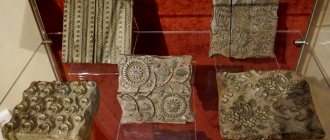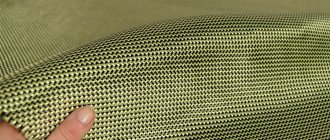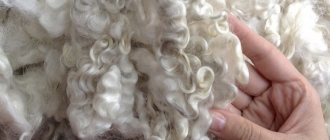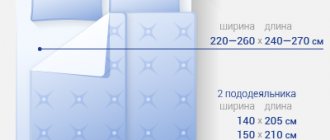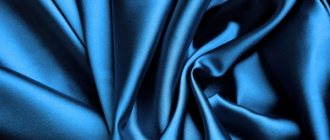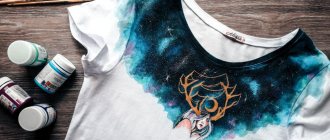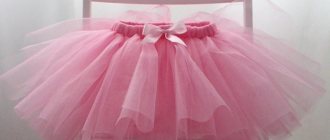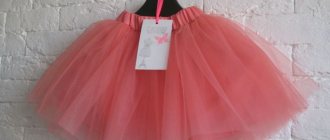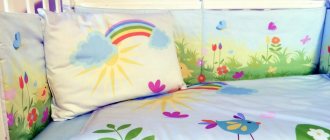What type of fabric is this?
Tulle is a synthetic fabric with a fine mesh structure. Made from polyamide thread. The fibers are twisted, intertwined and knotted together, forming a dense mesh.
Tulle fabric colors
High quality tulle is made in the USA. Less quality, but cheaper, is created in Turkey and China.
Types of tulle and areas of its application
The external difference of the material is determined by the shine or shine of the threads, the presence of sputtering, ornament or embroidery. In terms of color, the fabric can be presented in a single color or combined colors, changing according to the principle of the rainbow spectrum.
You might be interested in Features of the properties of taslan fabric and its use
Release material
- in factory reels with a web width of 1 m or more;
- in rolls of 15 cm;
- narrow ribbons up to 10 cm wide.
Based on the density of the fabric, the further purpose of the fabric is selected
Note! Hard is used for veils and jewelry, medium-weight for petticoats of evening dresses, and soft is used in sewing skirts.
Soft
Used for products with many folds that softly fall into waves. The bottom layer of a sleeve under organza or the edge of skirts protruding from under an elegant dress, imitating a petticoat.
Dress for girls
Origin story
Matter was invented in 1832 in the USA. Initially, the canvas was made from soft cotton, and the fine mesh structure helped against insects, so the material acted as a protective net against insects.
After the invention of nylon, they decided to include it in tulle. The fabric became stiffer, and tutus for ballet began to be made from it. After this, designers noticed the material, and tulle came into fashion.
Nylon
What kind of fabric is this - nylon? What are its characteristics and properties?
more details
Now tulle consists entirely of synthetics.
Features of caring for things made of tulle
- Elegant dresses or tulle skirts are washed in lukewarm water. Before washing, remove all decorations pinned or sewn to the model.
- For washing it is better to use a soft gel.
- They wash things by hand without active mechanical action; they are not wrung out or twisted.
- Rinse the clothes several times until the water is clean. During the last rinse, a conditioner is added, which prevents electrification of the synthetic material.
- Allow the water to drain, shake the product, straighten it thoroughly and hang it to dry.
- Iron with a humidifier, with extreme caution, determining the position of the iron regulator - “synthetics” or “silk”.
- When storing tulle products, they may lose their original fluffiness. In this case, the dress or skirt is carefully hung to a sufficient height and every fold or frill is straightened. It is good to use trouser hangers for this.
- Sharp creases are treated with a steamer or the product is hung for several minutes in a bathroom filled with hot steam. After this, the folds are straightened out and dried in a suspended state at room temperature.
Tulle is in many ways reminiscent of tulle, but differs from the latter in its smooth and uniform texture. This is a material for special occasions and exclusive outfits. It creates a special festive and romantic atmosphere.
© 2021 textiletrend.ru
Pros and cons of fabric
Pros:
- Attractive, lush look.
- Elasticity – quickly restored after being crushed.
- Does not absorb dirt and moisture due to the mesh structure.
- Wear resistance and strength.
- Variety of colors.
- Does not wrinkle and retains its appearance even when wet.
- Dries quickly after getting wet.
- Does not deform even after many washes.
- Multilayer tulle saves heat due to the fact that it allows little air to pass through.
- The single-layer material is lightweight, lightweight and breathable.
- Low cost.
Minuses:
- Often a lining is required.
- Difficult air exchange due to multi-layering.
- Does not tolerate high temperatures. If left near a battery, high quality matter may lose shape and begin to melt, while low quality matter may catch fire.
- It is electrified, so it is worth using antistatic washing agents.
- Clothing made from multiple layers of tulle can be hot, so it is worth wearing with a breathable lining.
Caring for tulle items
In order for tulle products to retain their shape and attractive appearance, they need to be properly cared for:
- Wash by hand with delicate detergents at a temperature not exceeding 40 degrees. Any dirt can be easily washed off from the fabric.
- Rinse in plenty of cool water. It is recommended to add antistatic agents.
- The rinsed tulle is shaken sharply several times, but not wrung out. Dry on hangers or in a dryer in a straightened form.
- Store tulle products on a hanger in special cases.
- The mesh does not wrinkle, so you usually do not need to iron tulle. If creases appear on the material or the item has lost its shape, then it needs to be hung and steamed in a gentle mode. You can also smooth the tulle with an iron by placing the fabric on the mesh and setting the device to the “synthetic” or “silk” mode.
- To make the skirt keep its shape, you can starch soft tulle at home. To do this, dissolve 2 tsp in a glass of cold water. starch. The mixture is poured into a liter of boiling water and boiled for 2 minutes. The resulting composition is diluted with an equal amount of cold water. The skirt is dipped into the product and then allowed to dry. By ironing the fabric is given the desired shape.
Watch about sewing and assembling fabric:
What standards are used in production? What do they take into account?
Technical requirements for the canvas are specified in GOST 26095-84. The density of the material should be 15-40 g/m².
Before going on sale, the fabric is tested:
- on a rejecting and measuring machine: quality assessment by appearance, length and width of the roll;
- in boiling water for thermal shrinkage;
- according to the pressure gauge for air permeability.
The following are not allowed in the material:
- holes;
- absence of two or more threads in the weave;
- undercuts, stripes of low density, in two or more threads;
- edge sagging and holes;
- not washed out spots;
- tears of the fabric base;
- creases.
Production technology
Modern mesh material is made from nylon and polyester fibers. The stiffness of the fabric directly depends on the thickness of the thread and the size of the cells. Tulle is divided into hard, soft and medium-density material.
- natural tulle gradually gave way to synthetic tulle;
- The density of the material ranges from 15 to 40 g/sq.m. m;
- cells measuring 1-2 mm form soft tulle, not suitable for products with a three-dimensional design;
- The addition of spandex threads increases the fabric's stretchability.
- wrinkle-resistant material is used as petticoats for ball gowns;
- the use of tulle as decoration for wardrobe or interior parts does not limit its use as an independent material for sewing elegant dresses and skirts;
You may be interested in Acrylic - what kind of material is it, advantages and disadvantages of fabric and threads
Please note! Designers and decorators use both shiny, matte and decorated materials in their work.
Decorated tulle
How is Eurofatin different from tulle?
- The main difference between the materials is the rigidity of the twisted synthetic threads used in the manufacture of the fabric.
- Eurofatin is distinguished by its soft texture and thin thread, which allows it to ideally fit the figure in a flowing wave.
- The cost of eurotulle compared to ordinary tulle is 1.5 times higher.
- Ease of sewing items with folds.
Eurotulle fabric is a type of tulle material that has a more delicate structure of synthetic fibers, which allows you to create multi-level masterpieces of dresses with an endless cascade of skirts and folds. Trains of wedding dresses and luxurious decorations at carnivals and balls. Children's dresses and costumes for ballet. This is what they sew from Eurofatin.
Soft eurofatin
Composition and properties
The quality of the fabric depends on the threads used in production. Synthetic fibers with polyester do not absorb moisture well, but give certain qualities to the material that make it especially popular.
- wrinkle resistance of fabric;
- elasticity of the canvas;
- wear resistance;
- resistance to pollution;
- affordable price of fabric.
Rigid fabric structure
Application
We mentioned the word fabulous for a reason - this fabric, due to its external characteristics, is often used in sewing carnival costumes (for both adults and children). What other purposes can canvas be used for? You will understand even better what kind of Eurotulle fabric this is if you use it for sewing:
- Stage costumes are story dresses, dance skirts or ballerina tutus;
- Fluffy tutu skirts for everyday wear and dresses with such skirts;
- Wedding dresses and veils, other festive headdresses;
- Ball gowns and prom dresses.
But the fabric is not used in everyday life - if ordinary material can be used for decorating or making curtains, the Euro variety will not withstand such manipulations.
Are underwear made from Eurofatin - of course not. Unless it's a role-playing costume. The fabric is a mesh that is used for decoration - it does not have the functional features necessary for underwear material. Look at the size chart for women's panties and find yours in 1 minute!
Finally, a few words about how to care for your products:
- When rinsing, add conditioner - this will help maintain softness;
- The fabric should not be wrung out, let alone twisted, it must be dried naturally;
- Ironing is not recommended - if necessary, only through a damp cloth. But it’s better to use a steamer;
- You can wash it in a machine - but at the lowest speed, on a delicate cycle;
- It is better to limit yourself to light hand washing with a soft gel.
They explained in detail what they sew from Eurofatin - it’s time to evaluate the advantages of the material in practice. Every girl has dreamed of a tutu skirt at least once - make your wish come true, buy a cool outfit for the summer and enjoy the flying silhouette and the attention of others. Next, see the table of correspondence between Italian clothing sizes and Russian sizes.
Tulle and mesh: what's the difference?
The structure of the fabric is based on stretching polymers to form fibers. Frozen threads do not have elasticity, so mixing with less rigid fibers, such as spandex, is used.
The durable material is woven on a machine in a special way to form cells from twisted threads. The form of weaving has variations. But the result is small cells. Forming a continuous mesh material. The word fighting has nothing to do with mesh materials, and the fabric is not considered non-woven because it cannot be made by hand like a fishing net.
You might be interested in this Description and features of universal microfiber cloths
Special weaving material
It is difficult to answer the question of tulle and mesh, what is the difference between them. The main indicator is the rigidity of the material and the shape of the weave of the threads, which influence this quality. Tulle is mesh. Only the use of particularly rigid fabric structures in non-wardrobe items makes the difference between different types of the same material.
Elegant dress
The tulle material has firmly established itself in the fashion world and has significantly improved the choice of fashionistas in replenishing their wardrobe.
Properties, types, classification.
Tulle differs from other mesh options in its smoothness and uniformity. Its small cells look like rows of “honeycombs”. The material is very thin and light, its density is from 15 to 40 grams per 1 square meter. m.
There are several types of tulle:
- Hard. Keeps its shape perfectly. It has the only drawback - sharp edges that can hurt you.
- Average. Adds luxurious volume to festive outfits.
- Soft. To create the “lush” effect, you will need a large footage.
Nylon thread gives strength and elasticity, which allows you to form lush designs of folds and flounces. By experimenting and adding spandex thread to the composition, the effect.
Tulle does not like high temperatures and can melt when ironed. Experts recommend using fire-resistant fabric from American and European manufacturers for sewing clothes. It does not flare up instantly, but smolders.
Tulle is stain-resistant, lightweight, does not fray, does not stretch when sewing, and does not require additional processing of seams. Synthetic fabrics have one big drawback. Several layers can create a “greenhouse effect”.
[adinserter block=”50"]
What can you sew from tulle?
Initially, tulle was only white. Thanks to modern technologies, the mesh began to be painted in various colors and decorated not only with sequins, rhinestones, but also with embroidery. Romantic, solemn and even shocking outfits can be quickly created using tulle. Nylon mesh is used for sewing a variety of products:
• hair decorations (ribbons, bows); • petticoats for elegant evening dresses; • comfortable petticoats for delicate wedding dresses; • costumes for theatrical performances; • decorations for the bride's veil, various headdresses; • carnival costumes (wings of fantastic creatures, insects - butterflies, dragonflies, bees); • ballet tutus; • topiary, multi-colored artificial flowers. Thematic decor used for wedding processions can be safely made from tulle, since this material will withstand the effects of rain, sun, wind, while maintaining its shape. How to care for such an unpretentious fabric?
• Before washing tulle, it should be prepared: remove all belts, brooches, and jewelry. The mesh can be easily washed using gentle gel-like products; it is advisable to wash it by hand, since the drum of a washing machine can damage the delicate structure of the material. • Rinsing should be done repeatedly using an antistatic conditioner. • Squeezing the mesh is done as follows: place the product in the bath and the water will naturally drain, after which you need to straighten the mesh and carefully hang it on the dryer. Tulle dries quite easily and quickly. • Tulle practically does not wrinkle, but if creases appear after long-term storage, you can steam them by turning on the delicate mode.

